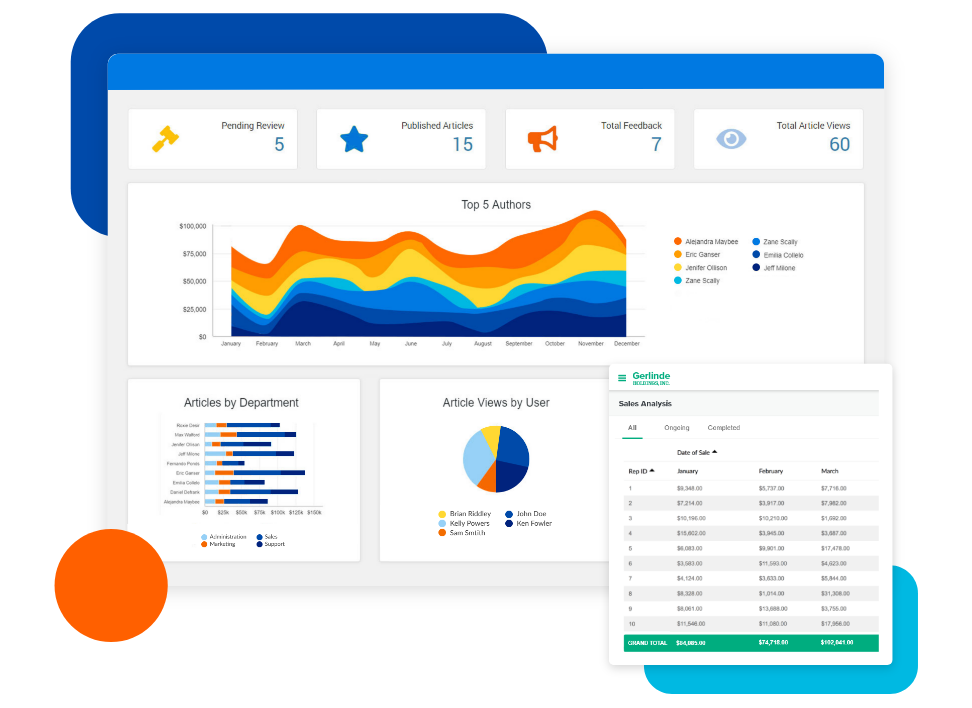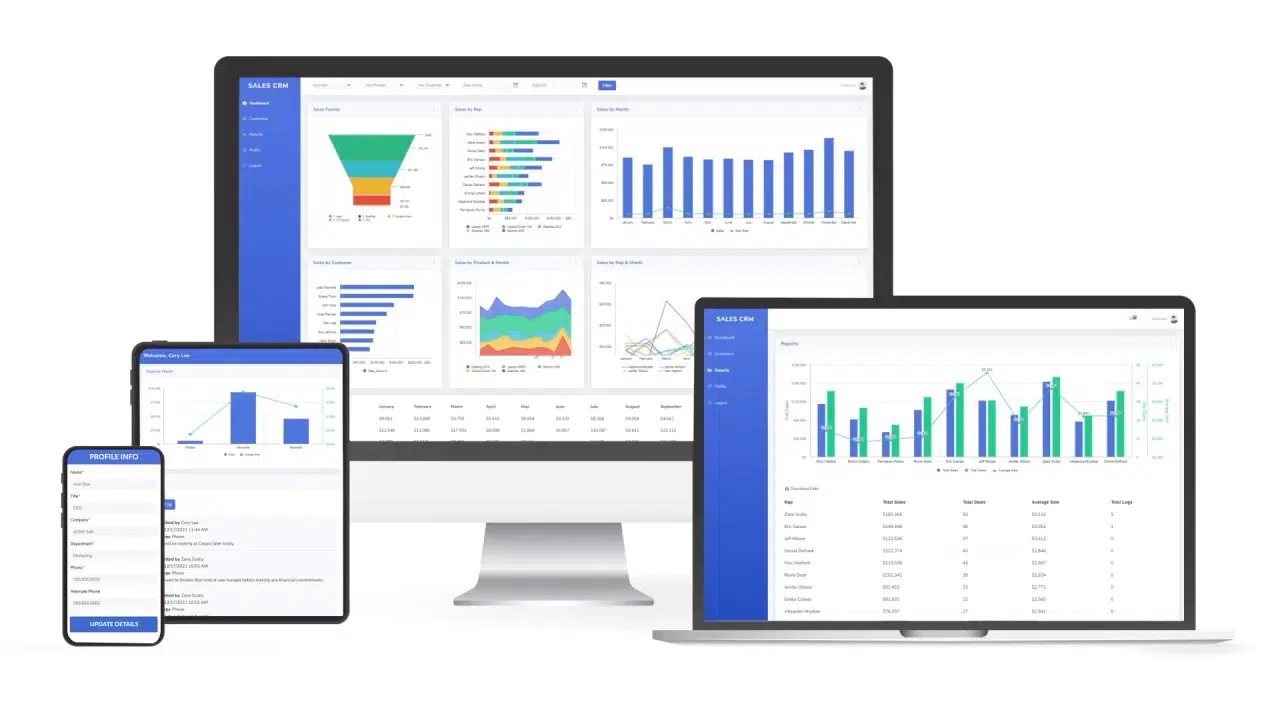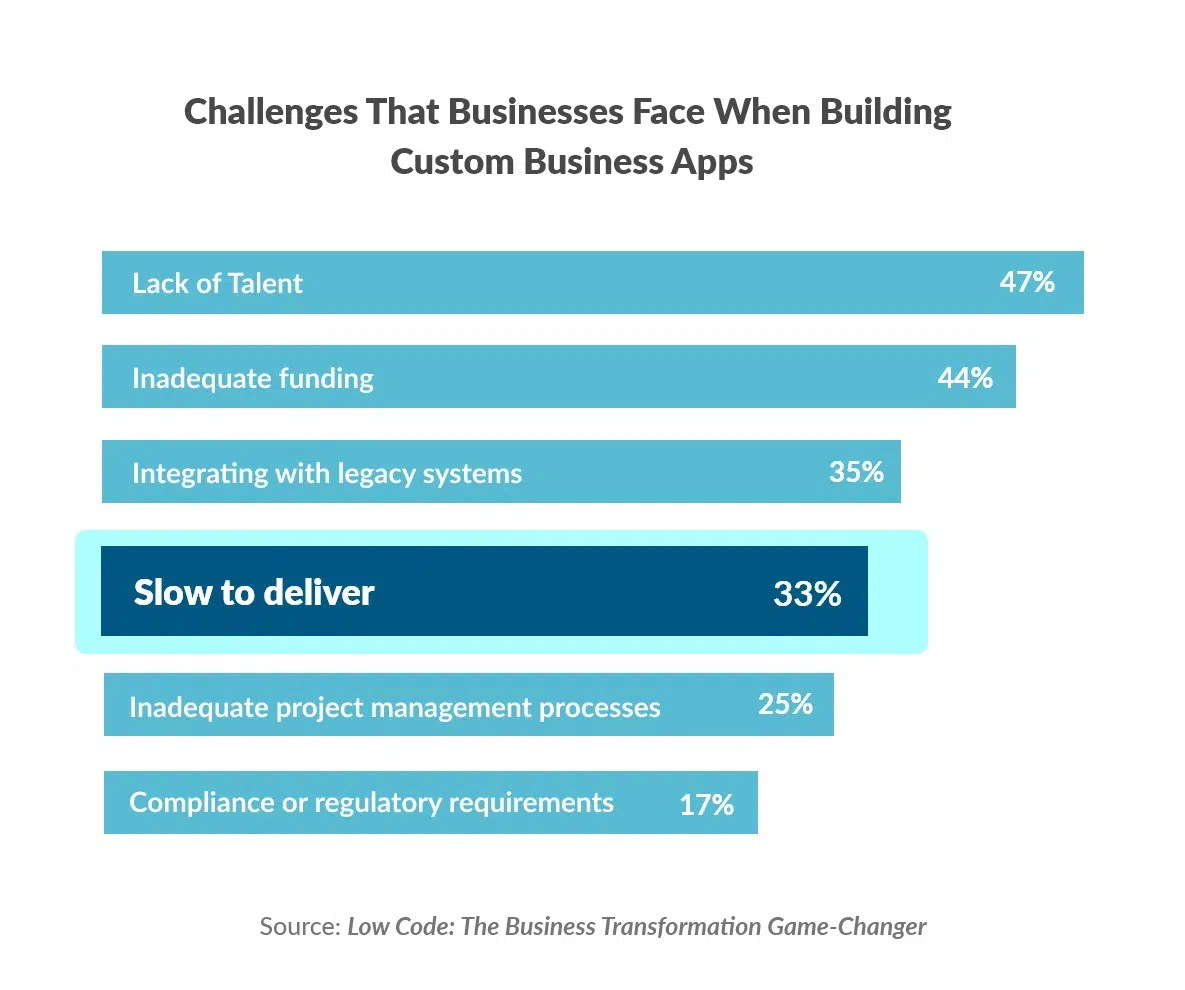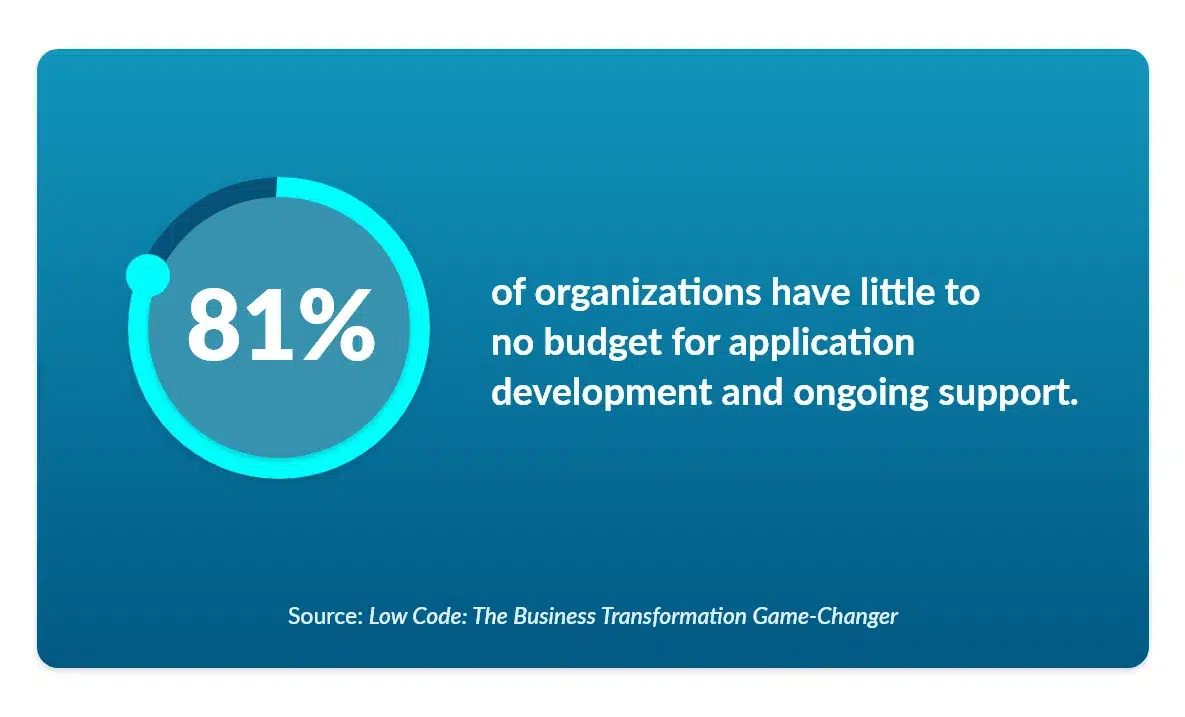High Contrast
Low-Code Development: Build Cloud Apps Fast

What is Low-Code Development?
Low-code development is the creation of software applications primarily through a visual platform while allowing full extensibility through custom code.
Low-code development is an intuitive way of creating software. Accelerating development team production through a drag-and-drop, point-and-click visual interface, low code lessens the need to write code manually.
Low-code platforms abstract code segments into clickable components, enabling the creation of both databases and applications significantly faster than traditional development.
This development approach encourages innovation by allowing technical business professionals to prototype new solutions alongside developers while remaining safely within IT guardrails.
Compared with traditional programming, low-code development provides significant cost savings as it reduces the need to hire hard-to-find programming talent. It further reduces costs by eliminating the need to procure and maintain additional infrastructure.
The Need for Custom Software
Organizations need custom software to remain competitive in today's business landscape, but the demand for purpose-built applications is growing much faster than IT can deliver.
Businesses know they can enhance processes using custom software, which provides organizations with competitive advantages. Nine in 10 business leaders agree. Custom software allows businesses to optimize customer experiences, improve internal workflows, deliver new products and so much more.
However, creating software is time-consuming, complicated and costly. For many years, it was only possible with a team of highly technical talent, including programmers, designers and IT specialists. Today, organizations can empower technical business users to assist in custom software building using visual development tools.
Low code allows professional developers to fast-track applications using point-and-click and drag-and-drop technology. It also enables tech-savvy business professionals with minimal to no coding experience to deploy powerful custom software, contributing to digital transformation initiatives.
Through low code, businesses address the demand for software that supports and enhances their day-to-day activities without the need to bring on additional development resources. Furthermore, low code enables the IT department to dedicate hard-to-find talent to finding solutions for the organization’s most critical and technical challenges.
Why Low-Code Development?
Low-code development enables users to develop custom software to improve customer experience and accelerate innovation throughout the organization. Here are three reasons to use low code:
Fast-Track Prototyping
Ideas are the seed of innovation. However, ideas often stagnate as teams struggle to quickly build prototypes, proofs of concept (POCs) and minimum viable products (MVPs). Either the market opportunity disappears or people simply move on.
With low-code development, businesses swiftly create prototypes, sparking interest, gaining buy-in and validating conceptual ideas in record time. It enables organizations to respond to new market opportunities and foster a culture of creativity and innovation.

Accelerate Roadmap
At minimum, traditional development involves a business user and a development team. Adjustments to app functionality take a lot of time and communication. With low code, technical-minded business users are empowered to create the application themselves, eliminating the gap between visionary and builder, so no detail gets lost in translation.
Low-code development boosts the efficiency of software innovation, as it reduces the back-and-forth between line-of-business managers and the IT department. Because citizen developers are using low code, the IT team can be at peace knowing everything is secure and compliant.

Cost-Effective Development
Because of their extensive training, seasoned developers and engineers are often more expensive than other members of a team. Software engineer salaries in the US, according to Indeed, average $127,195. To have a complete team with full-stack development capacity, multiple software engineers would need to be hired.
With low-code software development, organizations don’t need to hire additional tech talent to create their custom solutions. Instead, they can empower business users to participate in app development while the IT department can direct highly specialized talent to solving the organization’s most critical and technical challenges.

Low-Code Extends No-Code Apps
Low-code development shortens innovation timelines by enabling professional developers to build cloud applications faster than traditional, line-by-line coding.
But to truly democratize application creation, organizations must be open to leveraging both low-code and no-code development. No-code makes software development more accessible to business users, not just experienced developers.
Traditional developers must be able to supplement and enhance the no-code work done by citizen developers – using low-code solutions. They may leverage low code to add further customizations, implement strict security and compliance requirements, add visual improvements to meet corporate branding guidelines and more.
By working on a single platform that allows both no-code and low-code development, organizations bridge their IT skills gap.
Try Caspio Free and Create Your First App Today
Build a robust and feature-rich application on the Caspio platform with little to no coding. Get started today with a free trial of Caspio. No credit card required. If you prefer to talk to a product expert for a personalized and guided introduction to Caspio, schedule a free consultation, and our team will reach out to you.
Your Low-Code Development Questions Answered
Will low code replace developers?
No. Low code is not intended to replace the specialized work of a programmer; instead, it acts as an alternative approach to empower business users to create unique business solutions, allowing professional developers to focus on more complex tasks. Low-code platforms assist organizations in customizing business apps and automating workflows in a faster, more efficient way than the traditional route, allowing users to achieve more in less time.
Is low-code better than no-code?
If you have a development team, adopting a low-code platform would accelerate their production. But if you have technical-minded business users who do not have a programming background, then your organization would be better served by a no-code platform. While not requiring any coding knowledge, Caspio’s no-code platform allows for customizations via industry-standard extensibility, giving you the best of both worlds.
What is the point of low code?
Low-code platforms enable programming professionals to create applications faster than traditional software development. They abstract code segments into components that can then be put into place on a (mostly) visual interface.
What is the point of no-code?
No-code app-building platforms enable technically minded business users to create simple applications, which traditionally require a development team, by abstracting code segments into visual models.
How does low-code and no-code work?
Low-code and no-code platforms help users visually choose and connect components containing abstracted code. These components represent specific steps or capabilities that users can order together to create the desired application workflow(s).
What is low-code software development?
Low-code software development minimizes the need to write code. With low-code platforms, business professionals with little programming experience can use visual development tools to create and deploy applications online without additional IT overhead.
How are no-code and low-code different?
No-code empowers business users eager to bring their ideas to life using guided visual tools. On the other hand, low code allows technical users to quickly build applications with minimal coding for most use cases, with the option to extend their apps with scripting when required.
Can an entire team collaborate to build apps on Caspio?
Caspio allows unlimited app creators, making it possible for teams to participate in the development process. Promote collaboration and data sharing between teams and stakeholders by inviting them to work on cross-functional apps. With this, you democratize app development in your entire organization.
Does Caspio offer professional services to build apps for me?
Yes! If you already have your application requirements but aren’t too keen on building and testing it yourself, schedule a free Project Consultation session with a Caspio expert today. We’ll help you get all the IT talent you need to build custom solutions for your business.
How can I retrieve my data from the Caspio platform?
With Caspio, you can easily download any information you’ve stored on the platform by scheduling automated data exports or exporting data on demand.
Does Caspio work with other products and services?
Yes! Link Caspio with over 5,000 cloud-based services like Office 365, Salesforce and Mailchimp using our built-in integration with Zapier. It’s also possible to sync data between systems using tasks that automatically transfer data across popular cloud repositories such as Box, Dropbox, OneDrive and Google Drive.
How much does Caspio cost?
Caspio offers various subscription plans: from a Free Account suitable for simple projects to Corporate Plans that include enterprise features, advanced security and higher service levels. Compare Caspio pricing options to see which plan best fits your requirements.
How do I get started?
Simply sign up for a free trial. If you prefer to talk to a product expert for a personalized and guided introduction to Caspio, schedule a free consultation and our team will reach out to you.

